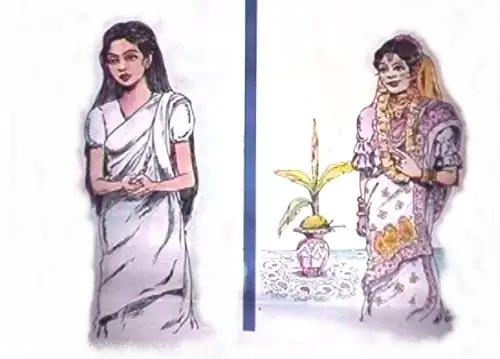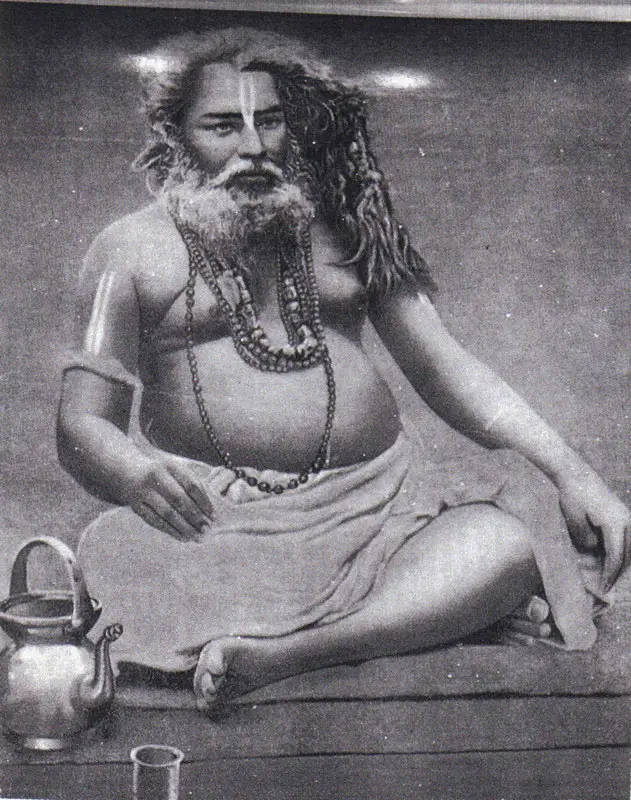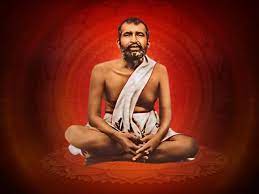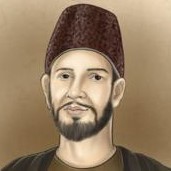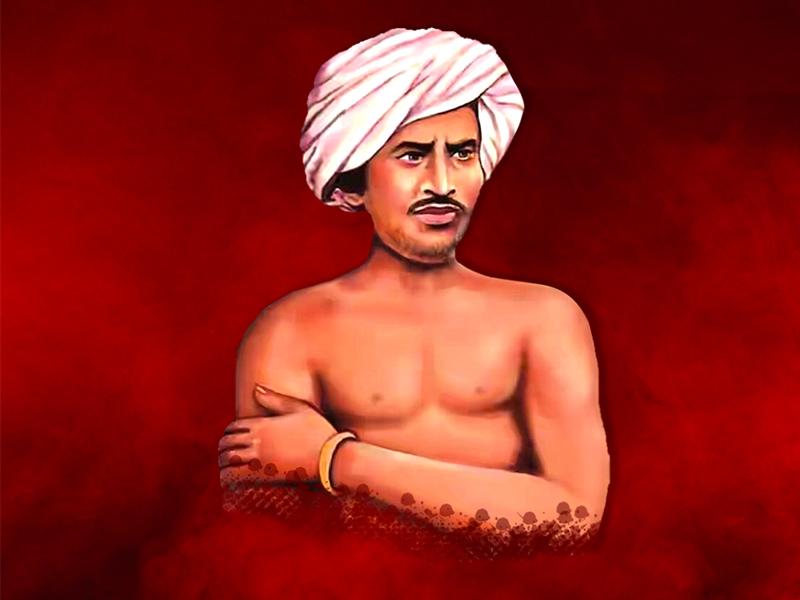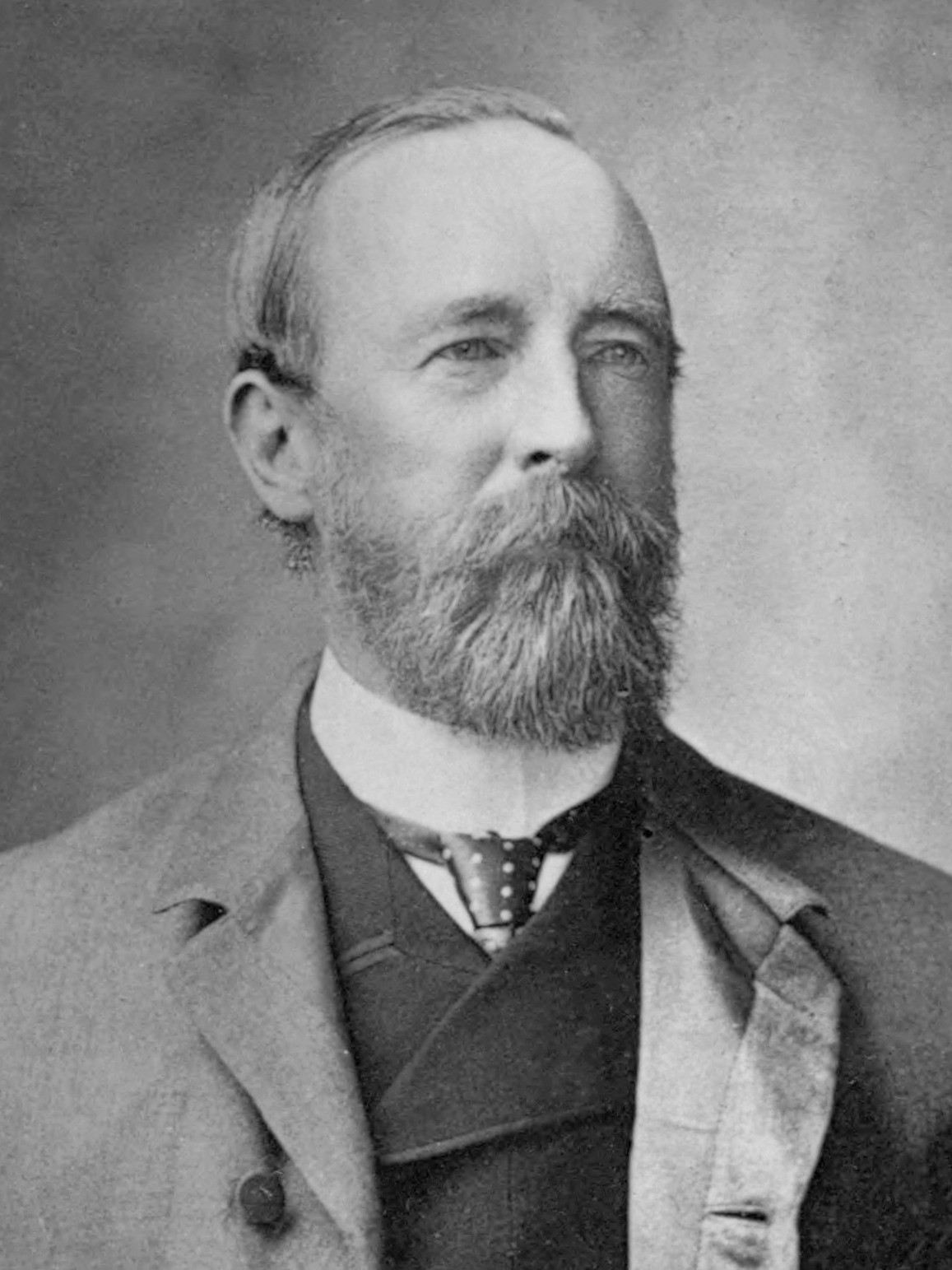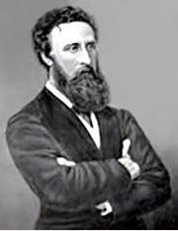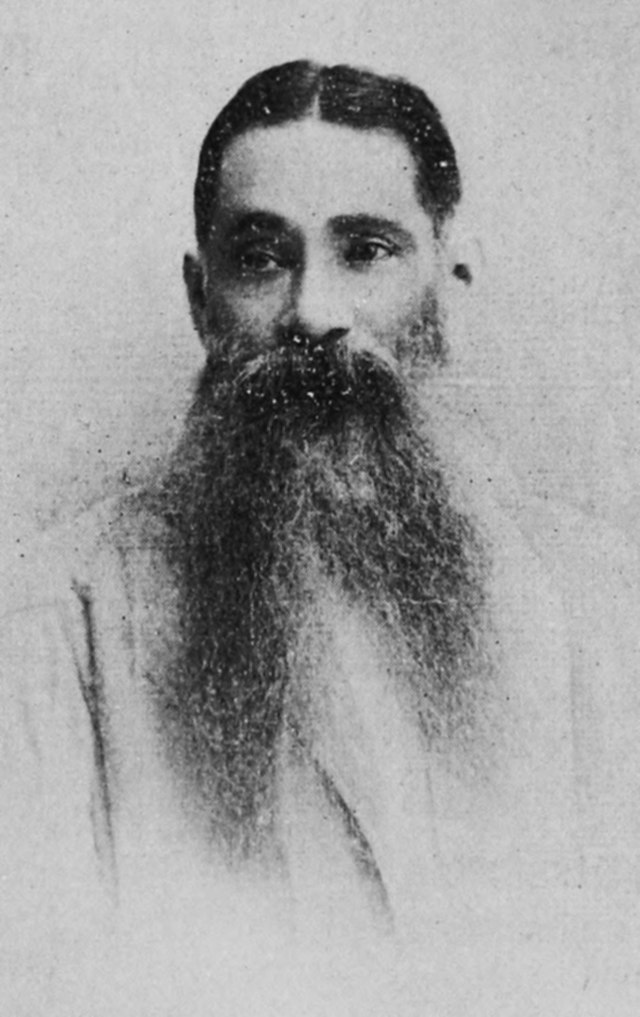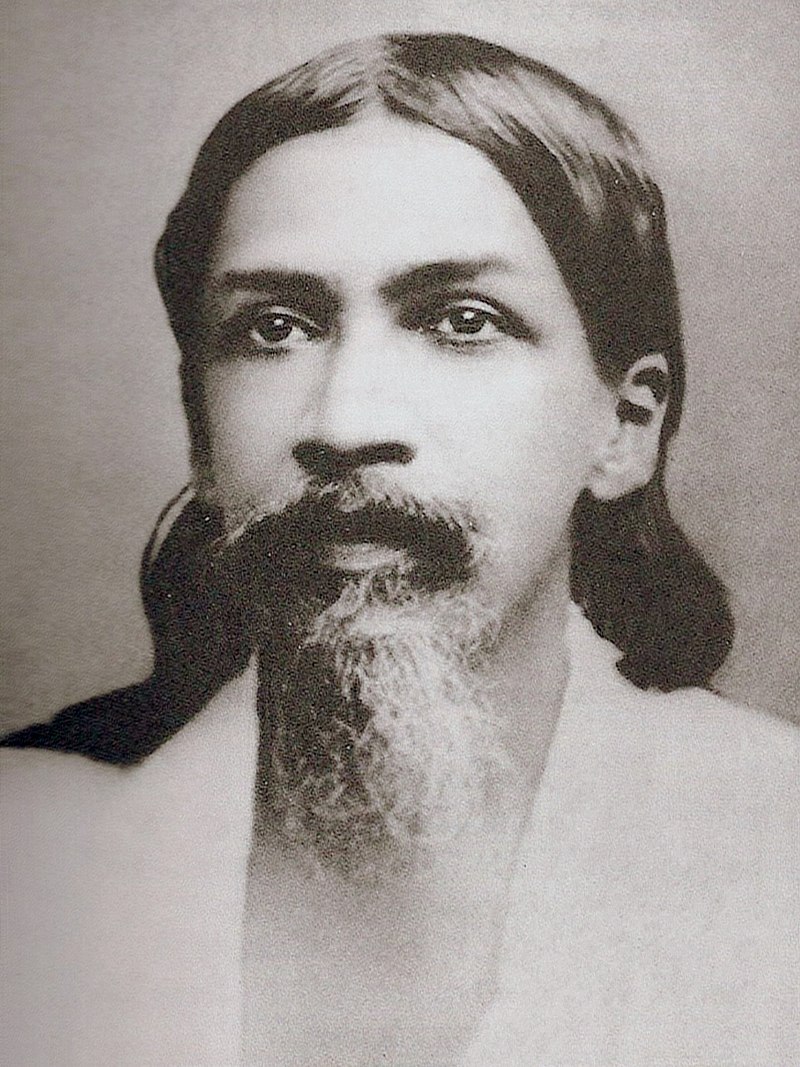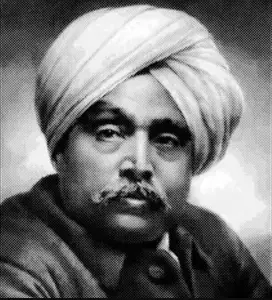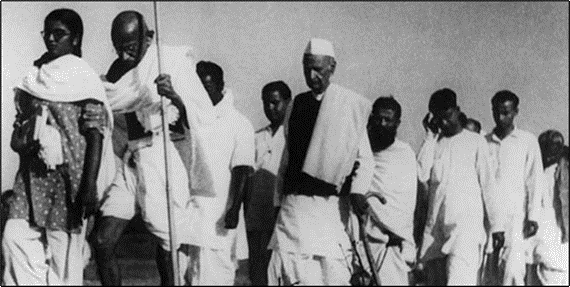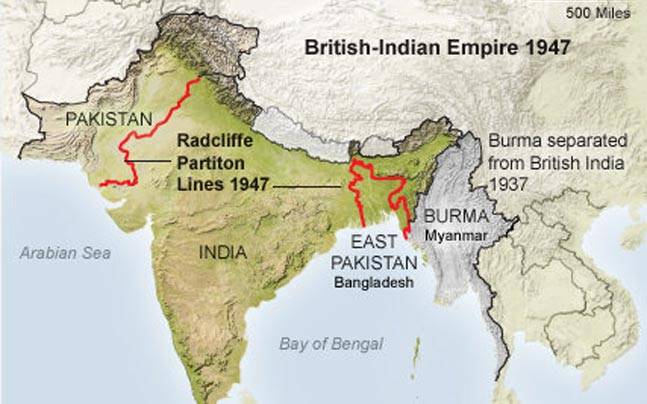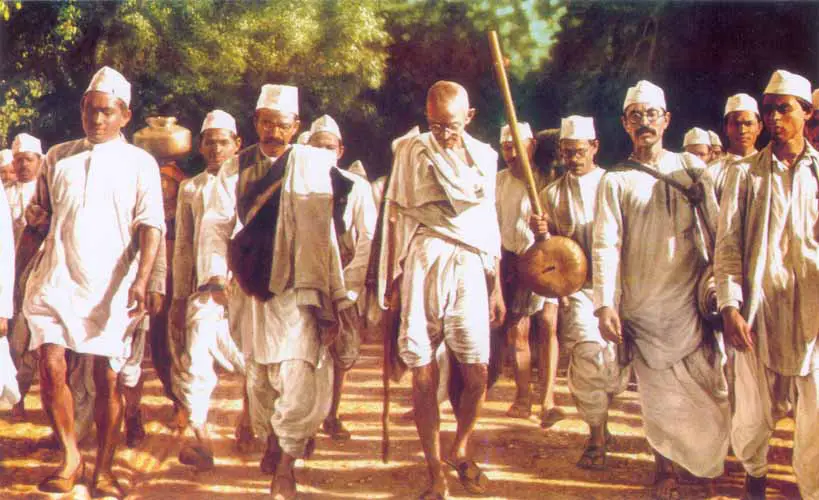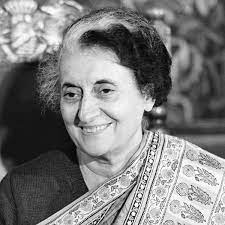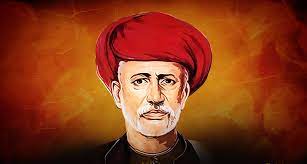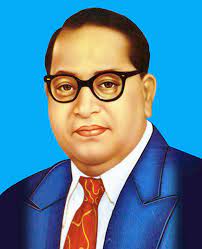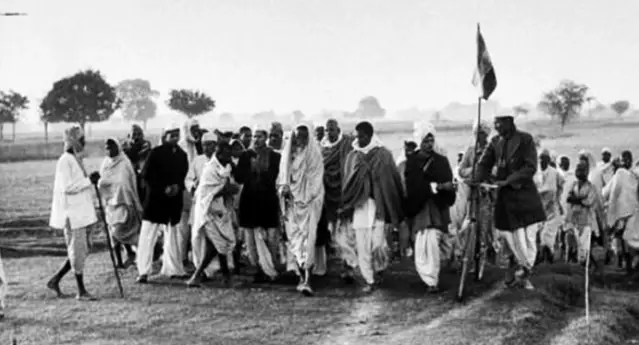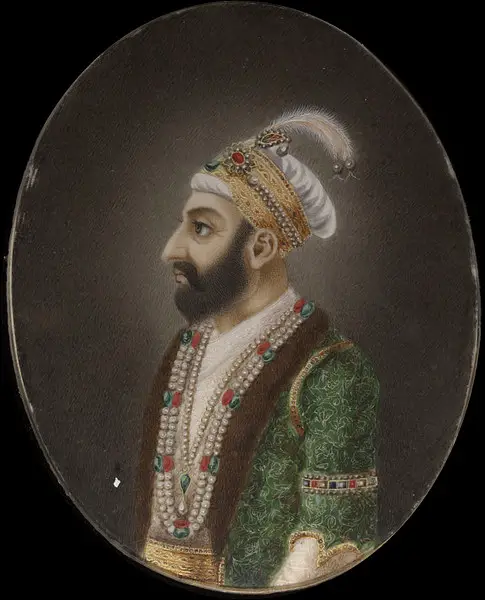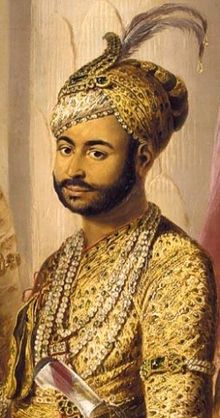Chapter 4 Nature Of Colonial Economy Background
The Supremacy of the British in India was known as the ‘British Raj’. “The settlement of 1818 marks the beginning of the paramountcy of the East India Company” (Dodwell).
After establishing colonial rule in India, the company’s political, economic, and administrative power highly developed. In a time of the rule of the English East India Company (1757-1857) the Nawab of Bengal and as well as native princes became the puppet rulers to the hands of the British.
Most of the Governor Generals founded the British Raj on a strong basis. According to R. C. Majumder sovereignty or paramount power of the British in India is called the “British Raj”.
The concepts of ‘oligarchy’ and ‘autocracy’ were taken in, the new administrative policy of the British Raj. The growing colonial imperialism had been seen after the Sepoy mutiny (1857).
“WBBSE class 8 history chapter 4 notes”
So the aftermath of the Revolt, Queen Victoria (1837-1901) adopted the policy of reorganization of the British Raj.
Chapter 4 Nature Of Colonial Economy British Colonial Impact On The Indian Economy
British Colonial Impact On The Indian Economy
The colonial rule of the British had a deep impact on the Indian Economy. After the Battle of Buxar, the Company’s colonial expansion and colonial exploitation reached the highest grade.
The period of dyarchy gave political support to the colonial rulers in India. The prosperous trade and industries in India gradually declined.
| Class 8 General Science | Class 8 Maths |
| Class 8 History | Class 8 Science LAQs |
| Class 8 Geography | Class 8 Science SAQs |
| Class 8 Maths | Class 8 Geography |
| Class 8 History MCQs | Class 8 History |
The important ship-building factories were built in Sweat, Bassein, Goa, Chittagong, Dacca, and Mussolipattam, which once came under the control of the colonists.
The silk, wool, and cotton textile industries developed in Ahmedabad, Surat, Broach, Bangalore, Madurai, Delhi, Agra, Vishakapattanam, Benaras, Lahore, Multan, etc. The ‘Moslin’ and ‘Calico’ cotton goods of Dacca were world famous.
“nature of colonial economy WBBSE class 8 history”
Apart from these ceramic earthen pottery and leather industries and its various artisans appeared in this period. In a word, the indigenous economy was self-sufficient and prosperous.
But the establishment of the Company’s colonial rule and its exploitation gradually ruined the whole economic network. The period of “economic plunder” really started from the post-Plassey and Buxar eras.
Very soon India’s politics, society, and economy were severely affected. British colonial rule highly affected the Indian village economy.

As a result
- Prosperous self-sufficient villages declined.
- Village agrarian society penetrated poverty.
- Administrative reforms of the British delta mode blow on the agriculture and peasantry.
- Every governor of India paid attention to Indian revenue because it was their high source of national income.
- The ‘Dadan System’ of the company became the cause of increasing tension in the village community.
- Not only the raw materials, to sell their industrial products company captured the whole, market of India.
- The government also started the policy of payment of revenue through cash, not by kind.
- The company’s ‘agents’ and ‘gomastas’ collected the agrarian goods and raw materials at a very high price.
- Due to the high taxation of Indian cotton goods, the helpless cotton weavers and artisans were compelled to give up their traditional occupations. Mr. D. H. Buchanon said that the introduction of railways ruined the self-dependent village economy.
- The company’s policy of de-industrialization also had far-reaching effects.
Chapter 4 Nature Of Colonial Economy Land Revenue Policy And Decline In Agricultural Economy
At the very outset of the company regime, the whole of India including Bengal, Bihar, and Orissa, was an agriculture-based country. So, due to the eagerness of the British and the active part of the Company, different land revenue policies were taken up.
After Bengal, Bihar and, Orissa got the Diwani (1765 A.D.), the income of the company increased to a great extent. In 1765-66 A.D. the land revenue collected was Rs. 1 crore 20 lacs. Later it increased to Rs. 2 crores 40 lacs.
Dewan Reza Khan and Sitab Rai used to collect huge revenues from Bengal and Orissa respectively by coercion and exploitation. At this time, the condition of the Bengali farmers became worse as Clive introduced dual ruling.
“exercise 4 solved questions on colonial economy class 8”
After Clive, Verelest (1767-69 A.D.) and Cartier (1770 A.D.) did not even try to improve the coerced way of collecting land revenue.
Land Revenue Policy of Warren Hastings:
The company formed ‘Comptrolling Councils of Revenue’ in Patna and Murshidabad in July 1770 A.D. with the purpose of retrenching the corrupted employees. Similarly, he formed the Comptrolling Committee of Revenue in Calcutta in April 1771 A.D.
The ‘Court of directors of the company ordered the principal officers in Calcutta to recover the condition of famine-stricken Bengal. Under these circumstances, Lord Warren Hastings was sent to Bengal as governor (1772-85 A.D.).
After being governor he immediately sacked Reza Khan and Sitab Ray and appointed a special class of employees known as ‘Collector’. A ‘Board of Revenue’ was formed to determine how much revenue they would collect.
Under this Board, there was a ‘Committee of Circuit’. Warren Hastings introduced the ‘Five-year settlement from 1772-77 A.D. It visited each district and the ‘Committee of Circuit’ was given the responsibility to allot land through an auction for a tenure of five years.
In 1773 A.D. a change was made in the revenue system by the ‘Regulating Act’. ‘Hastings-Barwell’ Project was made in 1775 A.D. Middleton Decars supported it.
“WBBSE class 8 history chapter 4 important questions
Ultimately the five-point system was nullified due to some disadvantages and a One-year settlement was introduced in 1775 A.D. even before the end of the five-year settlement system.
Neither a Five-year settlement nor a One-year settlement was introduced in 1775 A.D. even before the expiry of the Five-year settlement. Warren Hastings appointed Amini Commission in 1776 A.D.
Both Five year and One-year settlements could improve the condition of the peasants.
Class 8 History Wbbse
Chapter 4 Nature Of Colonial Economy Land Revenue Policy Of Lord Cornwallis
Cornwallis changed the system of land revenue. Sir Henry Dandus, the President of Pitt’s India Act (1784 A.D.) The Court of Directors and Board of Control advised him to reform the land revenue and to introduce a permanent settlement.
He enquired about the land revenue in 1786-89 A.D. At last, he introduced the ‘Ten-year settlement’ in Bengal and Bihar in 1789 A.D. and in Orissa in 1790 A.D.
Lord Cornwallis

To make this system permanent, he discussed the matter with Charles Grant, John Shore, Phillip Francis, Thornton, etc. This permanent settlement became legalized when the Court of Directors sanctioned it.
Permanent Settlement:
Cornwallis introduced the permanent settlement on 22nd March 1793 A.D. This system was introduced in Bengal, Bihar, Orissa, and Benaras. Basically, this system was introduced between the zamindars and the Company.
So it was also known as the zamindari system. Cornwallis thought that this system would bring about the loyalty of the zamindars as well as the stability of revenue earning would be restored.
“features of colonial economy in India class 8”
According to the historian Ramesh Chandra Datta (Economic History of India, Vol-1), the collected revenues from the permanent settlement was very much necessary for the Company for the expansion of the kingdom, warfare, and expansion of trade and commerce.
Because 9/10th of such revenue had to be paid to the Company and the rest 1/10th remained with the zamindars. The excess amount was negated by the zamindars even if it was illegal.
“impact of British policies on Indian agriculture WBBSE”
Impact or results:
The bad effects were as-
- Firstly: Due to such permanent settlement, the middleman between the zamindars and the collectors became the real owners of the land.
- Secondly: The Company did not determine the amount of revenue to be paid by the peasants.
- Thirdly: Many middlemen like ljaradar, Pattanidar, Paik, etc. threw the farmers of Bengal into absolute poverty due to the introduction of this system.
- Fourthly: The cottage industry collapsed as a result, and many artisans, artists, and social workers were thrown out of employment and became landless farmers. Karl Marx said in his book ‘British Rule in India’, “It was the change in the property relations which caused the social revolution”.
- Fifthly: Many Banian people of the city invested money in the land because they found that the zamindari system was profit-making. Over and above many noble and old zamindars became paupers due to “Sunset Law”:
- Sixthly: Historian T. R. E. Homes in his book History of Indian Mutiny said, “The permanent settlement was a sad blunder”.
So the government somehow managed this situation by introducing the ‘Bengal Land Tenancy Act’ (1859). The positive effects of the permanent settlement are as-
- The company assured about their source of income from land after the permanent settlement.
- The zamindars concentrated on improving land after getting the permanent right over the land.
Simultaneously, many people were interested in investing money in agriculture rather than investing in business or industry because the earning from the land was
much more. J. C. Marshman, the editor of Digdarshan said in his book History of India (VII-1871, Page 35) “It (Permanent settlement) was a bold, brave and wise measure.”
Ryotwari settlement:
In 1820 A. D. Thomas Munro and Captain Alexander Reed developed the Ryotwari system with the land tenants of the Bombay Presidency. The term of this system was for thirty years and it was developed with the understanding between the governments and the ryots.
Thomas Munro
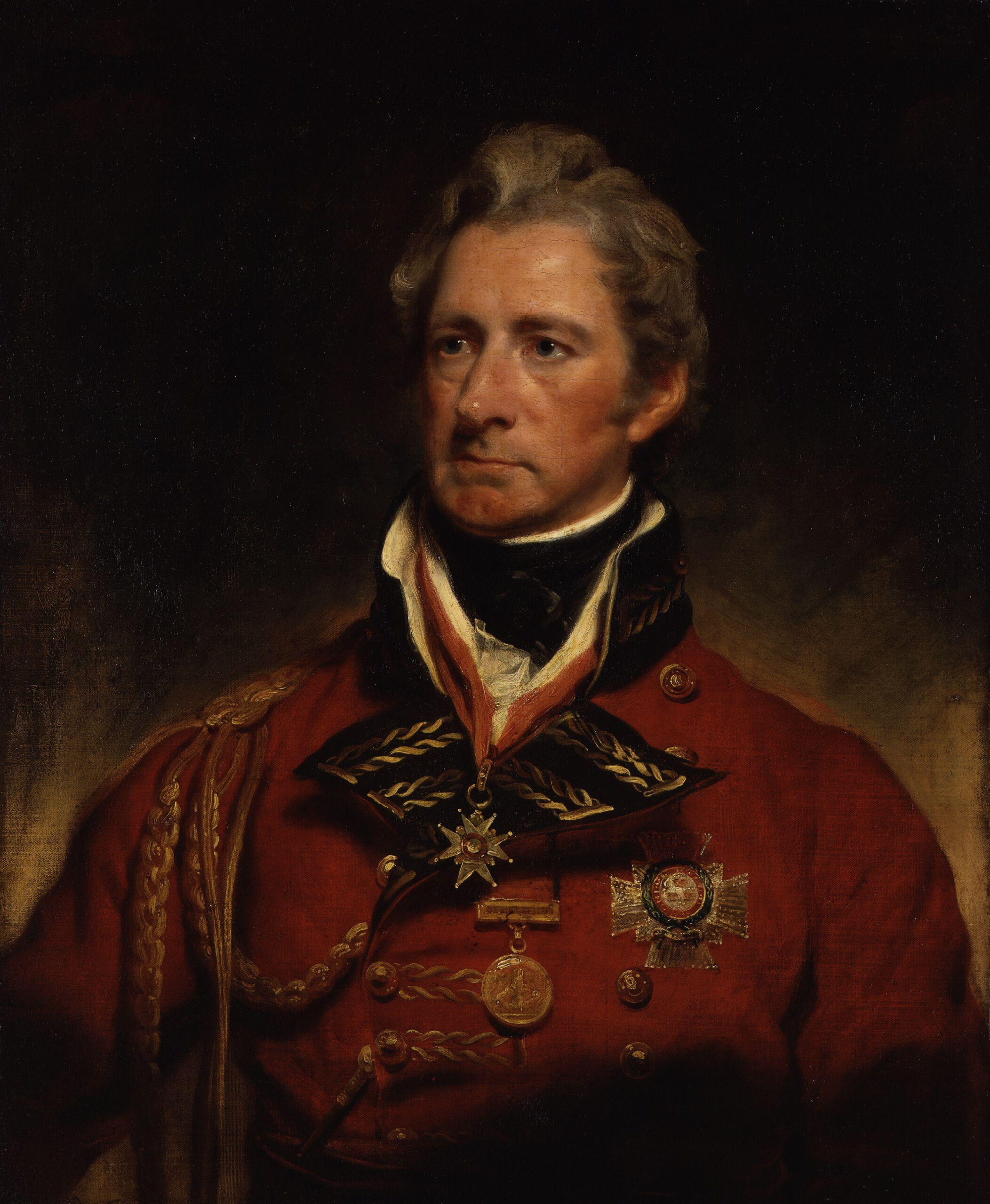
In this case, this government itself played the role of zamindar. Under this system, the ryots had to take help from the hawkers to meet up tax liability and became the prey of exploitation.
Thomas Munro introduced Permanent settlements in the places like Salem, Chingelpet, Chittur, Uttar Sarkar, Dindigul, Ramananda, etc. due to exploitations of the zamindars.
Mahalwari system :
In 1822 A.D. Mackenzie, the revenue secretary introduced the Mahalwari System in the Gangetic Valley. The land was distributed per mahal or house instead of per peasant. This was introduced in Uttar Pradesh, Madhya Pradesh, and Punjab.
Under this system, the land was distributed for a period of thirty years. Here the land revenue was fixed purely on estimation.
Due to the efforts of Elphinstone and Mackenzie, a combined Grammari and Bhaiachari system was introduced comprising of some Mahals or villages in Punjab (1824 A. D.). As the population was, this system was quite, effective.
“land revenue systems zamindari, ryotwari, and mahalwari”
Chapter 4 Nature Of Colonial Economy Impact Of British Land Revenue Policy On Indian Society
Impact:
The three mainland revenue policies like the permanent settlement with the zamindars, ryotwari settlement with the ryots or farmers and malware settlement with the family heads, and another system named Bhaiyacharya settlement with the village heads were together almost harmful for Indian society.
- Firstly, the heavy tax burden caused their increasing poverty and hunger.
- Secondly, many so-called zamindars were de-rooted or destroyed due to the rigidity of “sunset law” during the days of permanent settlement.
- Thirdly, all the revenue policies benefited only the British, not the peasants or the zamindars.
- Fourthly, neither government or their collectors did not have the interest to improve the painful life and miserable condition of peasants.
- Fifthly, traditional Indian society including agrarian society was totally destroyed.
- Sixthly, a new class of zamindars like ‘absentee landlords, money lenders, and intermediate classes’ emerged in Indian society.
- Seventhly, due to the bad
- Effects of land revenue policy rural agrarian society was ruined and new businessmen, money lenders, Damascus, barkandaj, paiks established their overlordship in villages.
- Eighthly, according to Dr. R. C. Datta due to poverty, famine, and measures money lenders, British agents, and, brokers of the new urban zamindars dominated over the villages.
These new classes had no interest in the welfare of peasants.
Chapter 4 Nature Of Colonial Economy Commercialisation Of Agriculture
One of the most important features of colonialism. The Indian economy was the commercialization of agriculture. The agro-based Indian economy is the main source of income of the British colonial rulers.
Commercial crops
Therefore, the colonial rulers gave importance on the cultivation of commercial crops like jute, indigo, tea, coffee, rubber etc. These are also called “commercial crops”.
For the introduction of highly developed transportation like the expansion of railways commercial crops were imported easily which increased the high process of commercialization of agriculture. It also helped to develop the concept of “modernization of economy” or “mixed economy”.

It is the symbol of a dynamic economy. After obtaining Diwani rights of Bengal, Bihar and Orissa Englishman introduced various land revenue policies to get maximum revenue from the Indian zamindars and peasants.
In order to meet the high demand of revenue, the peasants perpetually remained indebted to the local moneylenders. Many of the peasants lost their lands to those greedy money lenders for the inability to pay back the borrowed amount.
British government’s policy of commercialization of agriculture encouraged market-oriented production of cash crops like tea, coffee, opium, indigo, jute, sugar, etc. The peasants of India were forced to produce these cash crops that spoiled the fertility of the soil and other crops could be grown on it.
The growth of minimum subsistence crops led to the deterioration and impoverishment of the agriculture and cultivation of India. The peasants were suppressed under the triple burden of the government money lenders and landlords.
On the other hand, the lack of attention in the development of agriculture and the use of new methods and equipment of the British also ruined Indian agriculture.
The commercialization of agriculture means the agricultural crops and goods are produced by peasants for sale in markets and not for their own consumption. Commercialization of agriculture in India began during British rule.
Wbbse Class 8th History Notes
The commercialization of Indian Agriculture took place not to feed the industries of India, because India was far behind in industrial development as compared to England, France, Belgium, and other European countries of the eighteenth century.
It was done primarily to feed British Industries that it was taken up and occupied in case of those agricultural products which were needed by British industries or could fetch cash commercial profit to the British in the markets of Europe or America.
For example, efforts were made to increase the production of cotton in India to provide raw and good quality cotton to the cotton textile industries of England, which were growing fast after the industrial revolution in Britain.
Hence the production of Cotton increased manifold with the gradual lapse of time in India. Similarly, tea, indigo, coffee, and other plantation were encouraged in India because these could get commercial markets abroad.
It is very important to note that most of the plantations for commercial crops were controlled by the British. Crops like cotton, jute, tea, coffee, rubber, indigo, sugarcane, tobacco, ground nuts, etc.
Which had a high demand in the markets were increasingly cultivated by the British. The commercialization of Indian agriculture started post-1813 when the industrial revolution in England gained pace.
Its results were
- It was beneficial to the British planters.
- Traders and manufacturers were benefited by it.
- It also profited few Indian traders and moneylenders who made a huge fortune by working as middlemen for the British and it adversely affected the poor people of India and became difficult for them to get even a sufficient supply of food.
Evaluation:
The tax burden on the farmers increased as there had been new systems introduced gradually. Dr. Rajani Palme Dutta, said, “The agriculture of Bengal are more resourceful today, and more secure against the world effects of famine than the agriculture of any other province in India.”-Economic History of India.
De-industrialisation :
Before the advent of the Europeans in India, India was not an industrial country, but the “industrial workshop” of the world. India’s traditional village economy was characterized by the “blending of agriculture and handicrafts”.
But this traditional economic system rapidly declines from the beginning of the 19th century. This process came to be called as “de-industry- realisation”-an opposite term to industrialization.
Wbbse Class 8th History Notes
The use of the word ‘de-industrialization’ could be traced to 1940. Its dictionary meaning is the “deduction or destruction of a nation’s industrial capacity”.
The term came into prominence in India to describe the “process of destruction of Indian handicraft industries by competition from the products of British manufacture during the 19th century”.
Daniel Thorner defined de-industrialization as a decline in the proportion of the working population engaged in the secondary industry to the total working population or a decline in the proportion of the population dependent on the secondary industry to the total population.
But nationalist economists Dr. Ramesh Chandra Datta and Mahadev Gobinda Ranade said it as the process of “de-industrialization” since the bulk of the population is agriculture rather than industry as a means of livelihood.
According to Dr. Sabyasachi Bhattacharya, de-industrialization means the deterioration or decline of industries in India. But this opinion of nationalist historians like Dr. Bipan Chandra, and Dr. Amiya Kr. Bagchi, Dr. Tapan Roychowdhury, etc. is criticized by foreign historians, such as Morris David Morris, Daniel Thorner, etc.
Chapter 4 Nature Of Colonial Economy Decline Of Indigenous Industry In The British Period
The British people wanted to expand economic power after capturing political power. There are many impacts of the British industrial revolution in India. They used India for the supply of raw materials and also for selling their finished products.
Indian cotton textile industry suffered to a great extent due to this colonial policy. Economist Dr. R. Gadgil said that Indian handicraft and textile industry was destroyed due to this colonization causes are as-
- The Charter Act of 1813 A. D. demolished the trade monopoly of the East India Company. So Indian market became open to all of European merchants. The Indians had to pay tax which Europeans did not. Statistically, it is seen that England imported commodity of 3,86,000 pounds in 1780 A.D. which increased to 80,00000 pounds in 1850 A.D. England imported silk of 30,00000 yards in 1818 A.D. and in 1837 A.D. it increased to 6,40,000,00 yards. It proves that the Indian textile industry was already weak and it was destroyed due to the indiscriminate policy taken by the British government.
- Due to the decline of the independent Indian rulers, who were the chief patron of this industry, a decline of this industry became inevitable.
- The Company passed Acts in favour of their trade. Historian William Bolts said that they even tried to humiliate the carpenter of India. They even cut their thumbs. The carpenters had to sell their products to European merchants at a very low cost. So many of them joined agriculture and left their traditional job. In 1825 A.D. there were 1,50,000 weavers in Dhaka and in 1836 A.D. the number reduced to 30,000.
- Dr. Ramesh Ch. Datta, Lord Hamilton, and Dr. Rushbrook William said that the industrial revolution of England and government policies were togetherly responsible for the decline of Indian cotton industries.
“decline of Indian handicrafts during colonial rule”
The textiles of Lancashire, Manchester, and Yorkshire of Britain were sold in the Indian market without any tax. The British Parliament passed two acts in 1700 and 1720 to curb Indian imports.
The high rate of trade duties on Indian goods in England were imposed in 1747, 1759, and 1760. On the opposite, the Indian ‘Calico’ textile had a 672% extra tax, and silk of Dhaka (Maslin) had an additional 372% tax in Britain.
H. H. Wilson said that if Indian merchants could sell at a 50-60% reduced price, it would be profitable to them. The British government introduced the tax to protect British industry and to destroy Indian industry.
Morphing of India from an Exporter to an Importer-Jewel in the Crown of the British Empire.
It was quite natural for the European countries to exploit the natural resources of their colonies, for enriching their own interests. And India was no exception to this rule.
The British were looting the natural resources of the country and taking the minerals and other materials to Britain. They then processed the raw materials to finished goods and India was importing the finished goods for its own consumption.
For the very reason that India was the provider as well as the importer of goods from England, it was nicknamed as the Jewel in the Crown of the British Empire.
“deindustrialization and drain of wealth class 8 history”
Historian Dr. Tarachand had commented that Colonial India was converted into an economic slave of Great Britain. According to Dr. Rajani Palme Dutta, in his book India Today had said that Modern England’s shine was due to looted wealth by the British from India.
For this reason, contemporary British Prime Minister Benjamin Disraeli called “India as the jewel in the crown of the British Empire”. According to historians India changed from a net exporter to an importer sometime in 1842-43 AD.

By extracting and exploiting the resources of the country, and through the tribune system, England was earning millions worth of income every year.
In 1851 through the tribune system 2.5 million pounds, in 1901, 17.3 million pounds, and in 1933, 27.5 million pound sterling was earned by Great Britain from India.
“role of railways and telegraphs in colonial economy”
In 1878, the expenses made by the British Government on its military based in India was 25 million sterling pounds, which was equivalent to the 41 percent revenue budget of the country.
Hence the common man was paying a total of 41% of his taxes for the preservation of the British army in India. The major items being exported to Britain were tea, coffee, cotton, etc the net value of which in 1851 was 3.3 million pound sterling.
From 1913 to 1914, the British had taken 14-2 million pounds and in 1933-34 this figure had touched 68.7 million pounds. Besides this about 42-9 million pound worth of gold and silver was taken to England to secure the English currency against devaluation.
The British employees were also paid lavish salaries from the tax collected from the poor Indians. This is the reason why India was the jewel in the crown of the British Empire.
Chapter 4 Nature Of Colonial Economy Railway Establishment In India
The construction of railways in agriculture-based India brought a revolutionary change in transport, economy, lifestyles, and in other aspects. Railways played a pivotal role in the developing economy of modern India.
The proposal of setting up railways was taken up in 1832 A.D. first keeping in mind the overall development of agriculture-based poor India.
Later on due to endeavoring of Lord Dalhousie, “the father of Indian railways”, a railway line was laid from Bombay to Thane in 16th April 1853 A.D, which was 21 miles long.

In the next year, another line was laid by ‘East India Railways Co.’ from Howrah to Pandua in July 1854 A.D. From this time onwards a unique change was noticed in the economic, social, political, administrative, and cultural fields of India.
After that, the railway connection was made between Howrah and Raniganj in 1855 A.D. In 1856 A.D. Madras, Arcott, Calcutta, and Bombay were, included in the railway network.
About 200 miles of railway lines were made during the period of Dalhousie (1848-56 A.D.)
The expansion of railways was like the following chart :
1857 A.D – 439 Km
1860 A.D – 1349 Km
1870 A.D – 7678 Km
1890 A.D – 25,495 Km
1920-21 A.D – 56,980 Km
1946-47 A.D – 65,217 Km
In 1867 A.D. 19 out of 20 main cities of India were connected by railways. Anyway, the total expenditure for laying railway lines in British India was approx. 550 crores of Rupees. But it was not sufficient in comparison with the necessity.
Chapter 4 Nature Of Colonial Economy Objectives Or Reasons Of Introduction Of The Railways
1. Object of Dalhousie :
The main object of Dalhousie was to fulfill the imperialist interest by the introduction of railways in India. There were some reasons of Dalhousie behind setting up railways in India-
- To move the army to distant places quickly,
- To increase British investment in India.
- To build up communication with the ports. Dalhousie felt it very urgent and important to build up railways for the sake of economic, military, and political interests.
2. Administrative reason:
The Government gave importance on the railways for a better communication system. Besides this, the soldiers can be sent quickly to encounter any internal conflicts within the country.
3. Economic reason:
Railways were necessary for importing industrial products from England and exporting raw materials to England after the industrial revolution.
Many iron merchants and industrialists of England felt the importance of the construction of railways in India. Richard Temple, the Governor of Bombay said in 1880 A.D. that India should be included within the British empire because such an empire will last long due to huge British investments made in India.
Dr. N. B. Mehta has commented similarly in his book ‘Indian Railways’. So for the expansion of railways in India, at least 8 private British companies were invited to India with a minimum guarantee of 5% of the profit during 1849-1869 A.D.
The Clauses of this guaranteed system were-
- The government will allot land to the companies free of cost.
- They will receive a minimum 5% interest on the total invested capital.
- The government may buy out the railways after 25 to 50 years.
But these companies purposely used to show huge losses as there was guaranteed profit.
To compensate for these losses, there was great pressure on the land revenues of India. With this issue, the Government was immensely criticized and as a result, it canceled the guarantee system and started constructing railways of its own in 1869- 1880 A.D.
Wbbse History Chapter 4 Class 8 Notes
But due to the Second Anglo-Afghan war in 1878 A.D. and the famine, the Government was bound to re-establish the guarantee system in 1880 A.D. for the reason of extreme financial crisis. In that case, the rate of interest was reduced to 3.5%.
An important event was the establishment of “The Railway Board” in 1905 A.D. and the constitution of the Ackworth Committee under the leadership of Sir William Ackworth in 1919 A.D. The idea was to spend Rs. 150 crores per year for the development of railways. The railways was nationalized from this time.
Chapter 4 Nature Of Colonial Economy Good Effects Of Railways
- The communication system between the distant villages, ports, and markets was improved. Railways has an important role in communicating between town and the village. The village people got the opportunity to buy industrial products at a cheaper. rate only due to railways.
- Railways brought a revolutionary change in the transport system: Speedy movements of articles from one place to another was possible due to railways. On the other hand, the cost of transportation was decreased. The contribution of railways is enormous in sending relief and food to the regions affected by famine, earthquake, and flood.
- Railways opened a new horizon to employment opportunities. Railways played an important role in eradicating the unemployment problem. There were 34,000 railway workers within 12 years from the inception (1865 A.D.) and it increased to 2,73,000 in 1895 A.D. and 10,47,000 in the pre-independence era. So, there is no doubt that the railways brought a revolution in Indian life.
- Passenger carriage was 630 million in 1930 A.D. as opposed to 19 million in 1871 A.D. Besides this, the railways became very important in building up public opinion and exchange of views among the people of different parts of the country.
- Satisfactory advancement was made in industry and trade with the expansion of railways. Initially, only 700 railway engines were made in India. But it was insufficient to the needs. Hence 12,000 engines were imported from England. During 1862-1929 A.D. export increased to 230% and imports increased to 350%. Hence the railways can claim for high praise due to this overall improvement. Historian Bipan Chandra in his book “The Rise and Growth of Economic Nationalism in India” said that “The construction of railways had a revolutionary impact on the life, culture, and economy of Indian people.”
- Railways had helped in developing a sense of nationalism. The railways had a positive role in the exchange of views between different races, religions, and creeds. A sense of unity grew among the railway passengers.
- The agro-based economy of India was transformed into an industry and capital-based economy due to railways, though the British constructed railways for their own sake and interest. Karl Marx said that The railway system will become in India truly the forerunner of modern India.
Bad effects of Railways:
- As the ports and distant villages were communicated by railways, foreign articles became easily available to people. At the same time, Indian traders and commerce were affected due to unequal competition with foreigners. Thus, at one time, Indian industry and trade were almost ruined.
- The water transport system was neglected because too much emphasis was put upon railways. Due to such negligence, the navigability of the rivers as well as the irrigation system deteriorated to a great extent. To solve this problem a sum of Rs. 43 crores was spent for improving this in 1902 A.D.
It may be concluded that due to the advent of railways, the foundation of exploitation and colonial ruling became very strong. American historian D. H. Buchanan said that the self-sufficiency of the village people was shattered by the railway lines and started sucking the blood of the villagers.
The introduction of railways in India created a mixed reaction to the Indian people.
Features of modern industrial advancements in India :
The majority of the industries in the pre-British era were cottage industries in India. A revolution in Indian industries was noticed with the enterprising effort of the British.
Wbbse History Chapter 4 Class 8 Notes
As a result, the agro-based economy of India became an industry-based economy during the pre and post First world war periods. A new chapter was opened in the advancement of industry in India.
Both Indian and European enterprises were seen behind the establishment of modern industries in India.
Chapter 4 Nature Of Colonial Economy Problems Of Indian Enterprises In Industries
The Indian industries faced manifold problems in respect of Governmental help and lack of capital up to 1914 A.D. Only ‘The Punjab National Bank’ and ‘Bank of India’ were under the control of Indians.
They could get industrial loans from there but the rate of interest was so high that it was very difficult to earn a profit.
The Indians faced some special problems-
- The industrial policy of the Government was a hindrance for the Indian industrialists.
- The problem of capital investment was still there though the Indians set up banks and insurance companies.
- The Indian industrialists and merchants were continuously being pressurized from different angles.
- Europeans were getting privileges by getting agencies and guarantees in contrary to the Indians who were prevented from growing industries. Historian A. R. Desai thought that the British wanted to abolish the pre-capitalistic structure of production and became inclined to the modern capitalistic structure of production.
- Indians could not improve science and technology for the upliftment of modernizing industries.
- Apart from this, the Indian industrialists were in trouble because British Government did not give them an industrial loan, license, and fixed high rate of duties on imported cotton goods. They also reduced the supremacy of the Indians in the raw material market.
The main specialty of the advancement of modern industries was the enthusiasm and encouragement of the Indian industrialists.
Government sector industries and division of commercial departments (1905 A.D.):
The pace of the step which the British took in modern industrialization in India was very slow at the initial stage but later on this nature changed a lot.
“chapter 4 nature of colonial economy long and short questions”
Historian Rajani Palme Dutta said by quoting George Pein that the British Government in 1911 A.D. had invested about 3650 lac lbs. in India and Srilanka for the expansion of Industries. In the later stage, this was increased a lot.
Utilizing the administrative machinery, the British Government was increasing their profits in the name of industrialization in India.
An ‘Industrial Commission’ was set up in 1905 A.D. to start a new phase in different industries like indigo, paper, coal, coffee, jute and leather etc.
Chapter 4 Nature Of Colonial Economy European Enterprises In India
With the efforts of the Europeans, a new stream of industrialization started in India. This was the main specialty in the modern advancement of Indian industrialization.
The trend of such European efforts was like this :
1. Jute industry:
George Auckland founded the first jute mill in Rishra in Hooghly in 1855 A.D. From this, the interests of the jute cultivators were increased. As a result, jutes were cultivated in 8,50,000 acres of land in 1870 A.D.
It increased to 31,50,400 acres in 1903 A.D. Side by side, the number of jute mills and jute laborers also increased. The total number of laborers in 36 jute mills was 1,10,000 in 1901 A.D. as opposed to only 20,000 in 20 mills in 1882 A.D.
In 1913-14 A.D., the jute products exported from India were worth Rs. 2,05,00,000. The “Indian Jute Manufacturers Association” was formed in 1884 A.D. This was named as.
“Indian Jute Mills Association” in 1902 A.D. As a result, the expansion of the jute industry became organized.
“effects of colonial economy on Indian society WBBSE”
2. Garden industry:
The cultivation of indigo, tea, and coffee were the main garden industry. Andrew Charlton in 1832 A.D. planted tea trees at first in this country. Carl Bloom planted an indigo tree in 1780 A.D. Coffee was cultivated in the Nilgiri region (1823 A.D.)
The Europeans showed their keen interest in respect of these three industries. Several thousand of Nilkuthis were developed around this indigo industry.
Problems of the Indian industries:
The British Government took all measures to retard the industrial growth in India. They were completely against the growth of any industry under any Indian ownership.
Because, if the Indian industries grow, the British will lose the large Indian market and cheap labor and raw materials will not be available to them.
“practice exercises on nature of colonial economy class 8”
So the British Government put some restrictions on Indian industries, namely,
- Not to issue any license for Indian industries.
- Not to sanction ‘any loan for any modern industry.
- To fix the high rate of taxation on the transportation of Indian goods.
- To fix the high rate of taxation on Indian cotton industries.
- To flood the market of foreign goods by lowering the import duty for which Indian industrial products may not find a market within the country.
By this, the British Government showed a step-motherly attitude towards the Indian industries. But in spite of all odds and Governmental restrictions many modern industries under Indian ownership developed.
Some of these were garments, jute, tea, sugar, coal, glass, leather, paper, chemicals, engineering, iron, and steel, etc.
Chapter 4 Nature Of Colonial Economy Indian Industries in Pre First World War Period
A new chapter began when many modern industries were developed under the ownership of some Indians in the pre-first world war period.
Cloth industry:
The first factory of cloth manufacturing was set up in Ghusuri in Howrah in 1818 A.D. under the ownership of some Indians. But due to want of raw materials and capital, that factory was closed within a short period.
“how British economic policies benefited colonial powers”
The first large factory was “Bombay Spinning and Weaving Co” founded by Kowasji Nanabhai Davar (1814-1873 A.D.) in 1853-54 A.D. Within 1861 A.D. thirteen more cloth mills were established in Bombay and Ahmedabad.
This number was increased to 137 in 1876 A.D. According to the economist Dr. Sunil Sen (the name of his book is Economic History of Modern India) statistically there were 167 cloth mills under the ownership of Indians in 1898-99 A.D.
Kowasji Nanabhai Davar

This was increased to 335 in 1922 A.D. Out of this only 9 were under European ownership. The rest was under Indian management.
Dr. Rabindra Kumar thinks the main reason of cloth mills in Bombay being flourished was due to the fact that the riches of Bombay preferred investing money in cotton industries rather than inland property.
Wbbse History Chapter 4 Class 8 Notes
Besides this, in the early twentieth century, the taxes on cloth industries were very much relaxed and hence, the demand of Indian cloth increased in China as before. “Alexander Mill” of Bombay, “Empress Mill” and “Advance Mill” of Ahmedabad were the large cloth mills in the pre-first world war period.
Jute industry:
The first jute mill was established in Rishra of Serampore in Hooghly under Indian ownership in 1855 A.D. As there was no dearth of raw materials in this industry the total number of jute mills was 20 within 1882 A.D.
And total on both sides of the Hoogly river number of laborers engaged in these industries were 20,000. In 1895 A.D. the Government observing the satisfactory growth of this industry invested several crores of rupees and for this reason, the mills on either side of the Hooghly river were unified.
class 8 history chapter 4 wbbse
In 1901 A.D. there were 36 jute mills in India and 1,15,000 labourers in jute mills.
Tea industry:
Assam Tea Co’ was founded in 1845 A. D. under the complete ownership of the Indians. For the development of this industry many capitalists like Motilal Sil, Mirza Ispahani, Prince Dwarakanath Tagore, etc.
Motilal Sil

Invested Tea Co’s of Assam and Jalpaiguri large amount of money in this industry. In 1878 A. D. industrialist Jaichand Sanyal founded “Jalpaiguri Tea Company”, thus it became a glaring example in the tea industries.
Dwarakanath Tagore

Telegraph:
The word telegraph comes from the Greek word, ‘Tele’ or at a distance, and ‘graphein’ means to write. With the help of the telegraph, some small messages can be sent to far places at very less time.
Wbbse History Chapter 4 Class 8 Notes
This wonder invention was made by the French inventor Claude Chapel. Radio and wireless telegraphy came into being in the early part of the 20th century. England and India were connected through the telegraph in 1862.
Presently of course the communication systems globally have evolved into e-mails and short message systems through mobile phones.
The drain of wealth:
The theory of the ‘drain of wealth’ was used first by Dadabhai Naoroji in his famous book ‘Poverty and Un-British Rule in India’. According to him drain of wealth was the portion of wealth and economy of India that was not available to Indians.
In 1867 he said that Britain completely drained India. Indian leaders and economists stated that the constant flow of wealth from India to England for which India did not get an adequate commercial, economic or material return was the ‘drain of wealth’.
The colonial British government utilized Indian agriculture, revenue, resources, and industry not for developing India, but for the prosperity of England.
If the resources have been utilized within India then they could have been invested and the income of the people would have increased. The drain of wealth was interpreted as an indirect tribute extracted by imperial Britain from India year after year.
After the battle of Plassey, the situation was reversed and the drain of wealth took an outward as England gradually acquired monopolistic control over the economy of India.
The drain of wealth from India to England started in 1757 through dastak, dastur, Nazarene, and private trade. After. territorial aggression and administer East India Company acquired control over the surplus revenue of India.
class 8 history chapter 4 wbbse
The causes of companies surplus were
- Profit from oppressive land revenue policy.
- Profit from monopoly trade and control over Indian markets.
- Extractions made by the officials of the company.
The Drain of Wealth was nothing but a unilateral transfer of funds. The drain of wealth theory was systemically initiated by Dadabhai Naoroji in 1867 and further analyzed and developed by Dr. Ramesh Chandra Datta, M. G. Ranade, etc.
Poverty in India:
During the British colonial rule in India, poverty reached its highest grade. The drain of wealth, high rate of revenue, and other economic exploitations caused increasing poverty in India.
The causes of poverty in India are-
- Climatic conditions like frequent floods, famines, earthquakes, and cyclones cause heavy damage to agriculture,
- The rapid growth of the population aggravates the poverty of the people. The growth of the population exceeds the rate of growth in national income,
- The size of a family has a significant bearing on rural poverty,
- Lack of motivation is an important cause of rural poverty. Most of the rural people are lazy, dull, and reluctant to work. Hence they rot in poverty,
- Low agricultural productivity is an important cause of poverty,
- The decline of village industries and mobilization of labor also account for rural poverty,
- Lack of employment, education, etc. are responsible for poverty in India. Poverty in India is a major issue even in this day and age.
According to the common definition of poverty, when a man can no longer meet the required levels to maintain a specified standard of living, they considered poor.
It means that in India alone almost 220-1 million people are living below the poverty line almost 25% of the total population.



